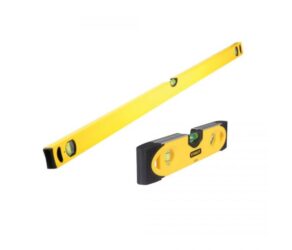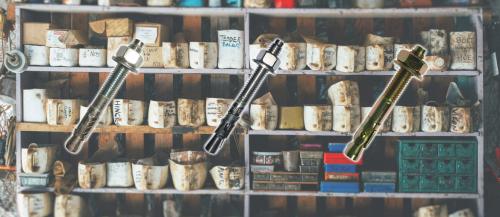Have you ever wondered how that little bubble in your spirit level manages to always tell you when something is perfectly horizontal or vertical? It's a question that sparks curiosity in many of us, especially when we're tackling a DIY project or hanging a picture straight. The spirit level, a simple yet essential tool in our toolboxes, has a fascinating history and an ingenious design. In this blog, we're going to explore the origins of the spirit level, uncover the secrets behind the all-important bubble, and discover the many ways this tool helps us in construction, DIY, and beyond - you will find everything you need to know about spirit levels right here!
Why, When, and Where Were Spirit Levels Invented?
The spirit level dates back to 1661, invented by Melchisedech Thévenot, a French scientist and Renaissance man. Thévenot’s invention was a substantial leap from earlier methods like plumb lines used by the ancient Egyptians and water-filled tanks by the Romans. Thévenot’s original idea featured a straight glass tube filled with water and an air bubble, initially intended for scientific purposes. Later, water was replaced by types of alcohol to prevent freezing, and the spirit level gradually found its way into various construction and surveying applications. By the 18th Century, it became more widespread. The spirit level is now available in various forms, made from materials such as aluminium and plastic, with some even including laser and magnet features.
How Are They Made and How is the Bubble Created?
A spirit level consists of a slightly curved glass tube, known as a vial, partially filled with a liquid like a coloured spirit or alcohol, leaving an air bubble inside (so, the bubble isn’t actually inserted, it is formed by leaving some alcohol out). The curvature ensures that the bubble rests in the centre, the highest point of the tube. When tilted, the bubble moves away from the centre, indicating the level of inclination.
The choice of liquid is incredibly important. Alcohols like ethanol are preferred over water for their low viscosity and surface tension, which allow the bubble to move freely and settle quickly with minimal interference. Alcohols also have a wider liquid temperature range and don’t freeze like water, avoiding damage to the vial.
The vial’s mounting within the spirit level’s body is equally crucial. It needs to be resistant to temperature changes and shocks to maintain accuracy. Some vials are fitted with tensioning wedges, ultrasound welding, or brackets for this purpose. Additionally, features like magnifying lenses and luminescent reflectors are added to improve visibility and accuracy.

How are Spirit Levels Used?
Spirit levels come in various types, each tailored for specific applications. Common types include:
- Carpenter’s level: used in woodworking for ensuring surfaces are level or plumb.
- Mason’s level: tailored for masonry work.
- Torpedo level: handy for tight spaces.
- Post level: ideal for ensuring posts are vertically aligned.
- Line level: used in conjunction with string lines for levelling over long distances.
- Engineer’s precision level: offers high accuracy for machine setup and calibration.
At BS Fixings, we appreciate the history and utility of the spirit level and are proud to supply a range of these essential tools. Whether you're a professional tradesperson or a DIY enthusiast, understanding the science behind the spirit level can enhance your appreciation and usage of this classic instrument. For more information on spirit levels and a wide range of DIY and construction products, contact us today!






